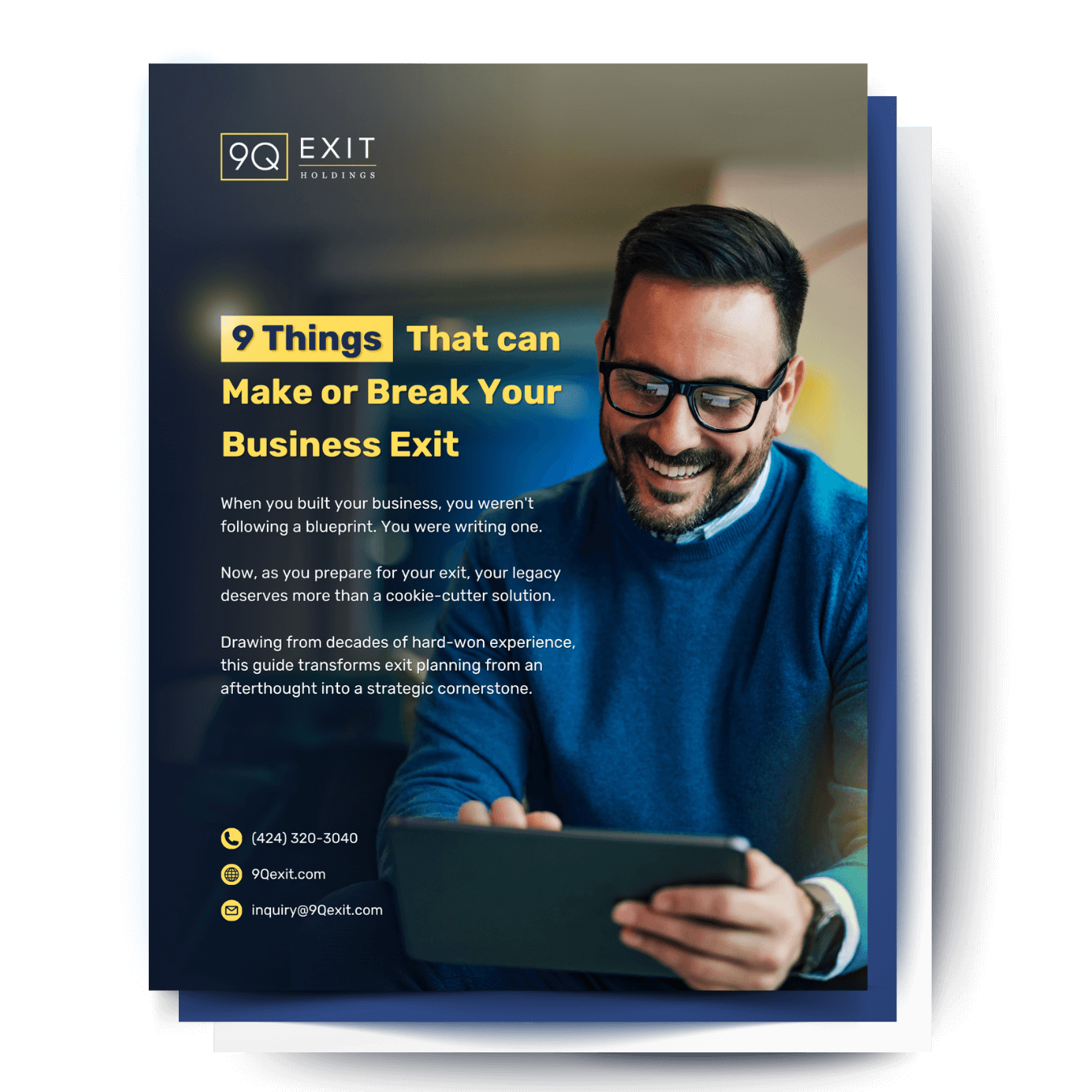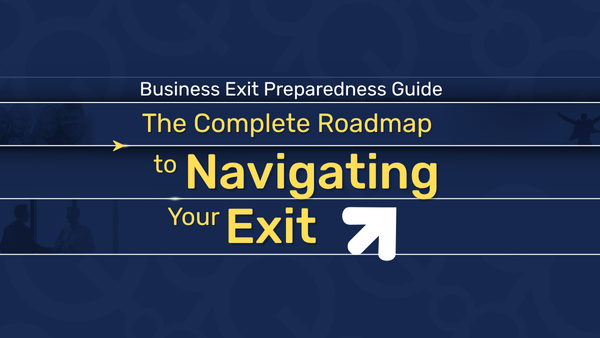Let’s set a scene:
Robert sells his logistics company at 57 for $18 million.
His financial advisor presented a detailed retirement plan: diversified investments, travel budgets, hobby allowances.
“You’re set for life,” the advisor smiled. “You never have to work again.”
But for Robert, reinventing himself after decades of building a business felt far more complex than just, retiring.
“I didn’t build a business for thirty years so I could play golf every day,” he told his wife that evening.
“I need something that matters, something challenging, something that uses what I’ve learned. But I also don’t want the 80-hour weeks and constant stress. How do I find the middle ground between complete retirement and starting over from scratch?”
Robert’s dilemma reflects a reality that traditional retirement planning ignores: Entrepreneurial personalities don’t shut off at 65. The same drive, creativity, and need for impact that built successful businesses doesn’t disappear with financial independence.
The Entrepreneurial Retirement Paradox

Traditional retirement assumes people work for money and stop working when they have enough. But for entrepreneurs, work provides identity, purpose, intellectual stimulation, and social connection. Money was often just the scorecard, not the primary motivation.
The Classic Retirement Model:
- Stop working abruptly
- Focus on leisure and relaxation
- Minimize responsibility and stress
- Spend accumulated wealth gradually
The Entrepreneurial Reality:
- Need for continued challenge and growth
- Desire to build, create, or improve something
- Requirement for intellectual engagement
- Drive to leave meaningful impact
Traditional retirement assumes people work for money and stop working when they have enough.
But for entrepreneurs, work provides identity, purpose, intellectual stimulation, and social connection.
Money was often just the scorecard, not the primary motivation.
The Energy Problem: Too Much Drive for Too Little Challenge

At 55-65, most successful entrepreneurs are at their peak capability. They have:
- Decades of experience and hard-won wisdom
- Financial resources to take calculated risks
- Professional networks built over entire careers
- Pattern recognition that comes from solving hundreds of problems
Traditional retirement wastes these accumulated advantages during the years when they could create the most impact.
The Golf Course Nightmare:
Many entrepreneurs try leisure-focused retirement and find it soul-crushing. “I can only play so much golf,” is a common refrain. “After six months, I felt like I was dying slowly.”
The Volunteer Frustration:
Well-meaning family members suggest volunteer work, but many nonprofits lack the operational sophistication that entrepreneurs expect. Instead of feeling helpful, they feel underutilized and frustrated by inefficiency.
The Reinvention Framework: Purpose Without Pressure in Reinventing Yourself

The solution isn’t returning to the stress of building businesses from scratch—it’s finding meaningful challenges that use entrepreneurial skills without recreating entrepreneurial pressure.
Stage 1: Identity Archaeology
Before choosing what to do next, understand what drove you in business beyond money:
Core Motivation Assessment:
- What aspects of business building energized you most?
- When did you feel most fulfilled during your entrepreneurial journey?
- What problems do you naturally notice and want to solve?
- What would you build if failure was impossible and money was irrelevant?
Skill Inventory:
- What unique capabilities did you develop through business ownership?
- Which of your strengths translated across industries or situations?
- What knowledge do you possess that could benefit others?
- What relationships and networks could you leverage for positive impact?
Stage 2: Impact Design
Create a framework for meaningful involvement that provides purpose without pressure:
The 30-70 Rule: Spend 30% of your energy on new challenges and 70% on personal freedom and relationships. This prevents both boredom and burnout.
Project vs. Commitment Thinking: Engage in projects with defined timelines rather than open-ended commitments. This preserves flexibility while providing structure.
Mentorship Leverage: Use your experience to accelerate others’ success rather than building from ground zero yourself.
Reinvention Models That Actually Work

The Strategic Advisor Path
Robert eventually became a board advisor for three mid-market companies. He provides strategic guidance 10-15 hours per week, attends monthly board meetings, and helps solve complex business challenges.
Why This Works:
- Uses decades of experience to solve interesting problems
- Provides intellectual stimulation without operational stress
- Creates meaningful impact on other people’s success
- Generates modest income that validates continued relevance
The Next-Generation Mentor Model
Susan sold her marketing agency and now mentors entrepreneurs through accelerator programs. She teaches workshops, provides one-on-one coaching, and helps founders avoid mistakes she made.
The Fulfillment Factor:
- Shares wisdom that only comes from experience
- Helps others achieve success faster than she did
- Stays connected to innovation and new business models
- Creates legacy beyond her own business success
The Social Impact Entrepreneur
David used his exit proceeds to start a nonprofit addressing veterans’ homelessness. He applies business principles to social problems but doesn’t need to generate profit or scale to venture capital expectations.
The Freedom Advantage:
- Tackles problems he’s passionate about without commercial constraints
- Uses business skills in service of mission rather than profit
- Creates measurable impact in areas that matter personally
- Builds something meaningful without family financial pressure
The Portfolio Approach
Maria splits her time between three activities: angel investing in startups, consulting for family businesses, and teaching entrepreneurship at a local university.
The Variety Benefit:
- Multiple sources of intellectual stimulation
- Different types of challenges and time commitments
- Continued learning through diverse environments
- Flexibility to adjust mix based on interest and energy
The Psychology of Starting Over Without Starting Over

Redefining Success Metrics
Business success was measured by revenue, profit, and growth. Post-exit success requires different metrics:
Impact Measures:
- People helped or lives changed
- Problems solved or innovations created
- Knowledge transferred or wisdom shared
- Relationships built or communities strengthened
Personal Fulfillment Indicators:
- Energy and enthusiasm levels
- Intellectual engagement and challenge
- Sense of purpose and meaning
- Work-life integration quality
Managing the Learning Curve
Starting anything new at 55+ involves ego challenges. You’re no longer the expert in the room, and learning curves feel steeper when you’re used to mastery.
The Beginner’s Mind Advantage:
- Approach new fields with curiosity rather than expectation of immediate expertise
- Use business experience as context, not assumption that all principles transfer
- Find learning opportunities that build on existing strengths
- Accept that some ventures might not work without viewing them as failures
The Social Impact Entrepreneur
David used his exit proceeds to start a nonprofit addressing veterans’ homelessness. He applies business principles to social problems but doesn’t need to generate profit or scale to venture capital expectations.
The Freedom Advantage:
- Tackles problems he’s passionate about without commercial constraints
- Uses business skills in service of mission rather than profit
- Creates measurable impact in areas that matter personally
- Builds something meaningful without family financial pressure
The Financial Framework for Freedom

One advantage of post-exit reinvention: you can optimize for fulfillment rather than income.
The Independence Equation
Calculate your “freedom number”—the income needed to maintain your desired lifestyle from investment returns. Everything above that threshold allows pure purpose-driven decision making.
The Risk Tolerance Shift
With financial security established, you can take risks based on potential impact rather than potential profit. This opens up opportunities that younger entrepreneurs might not be able to pursue.
The Timeline Liberation
Without pressure to generate immediate returns, you can invest time in longer-term projects that might take years to show results but create lasting impact.
Case Study: The Serial Reinvention Success
Mike sold his first business at 52, became restless in retirement, and has since:
Years 1-2: Taught business courses at a community college while angel investing Years 3-5: Launched and sold a smaller consulting firm to test new market ideas Years 6-8: Joined a nonprofit board and helped them scale operations Years 9-12: Started a foundation focused on entrepreneurship education
Each phase built on previous experience while providing new challenges and learning opportunities. Now 64, he describes himself as more fulfilled than during his original business-building years.
The Anti-Pressure Principles
To avoid recreating the stress you just escaped:
Set Boundaries Early: Define maximum time commitments and stick to them Choose Your Stress: Accept challenge-based stress while avoiding survival-based pressure Maintain Optionality: Preserve the ability to walk away from any commitment Practice Saying No: Protect your newfound freedom by declining opportunities that don’t align with your reinvention goals
The Long-Term Vision
Think of post-exit life as your “second act”—potentially decades of high-impact work without the financial pressure that constrained your first career.
The entrepreneurs who thrive after exit don’t retire from impact—they graduate to impact. They use the wisdom, resources, and freedom their success created to tackle bigger problems, help more people, and create lasting legacies beyond their business achievements.
You spent decades building something valuable. Now you have the opportunity to use everything you learned to build something meaningful. The question isn’t whether you should stay busy—it’s how you want to direct the energy and capability that financial freedom has unleashed.
Your next chapter doesn’t have to be your last chapter. It might be your most important one.







